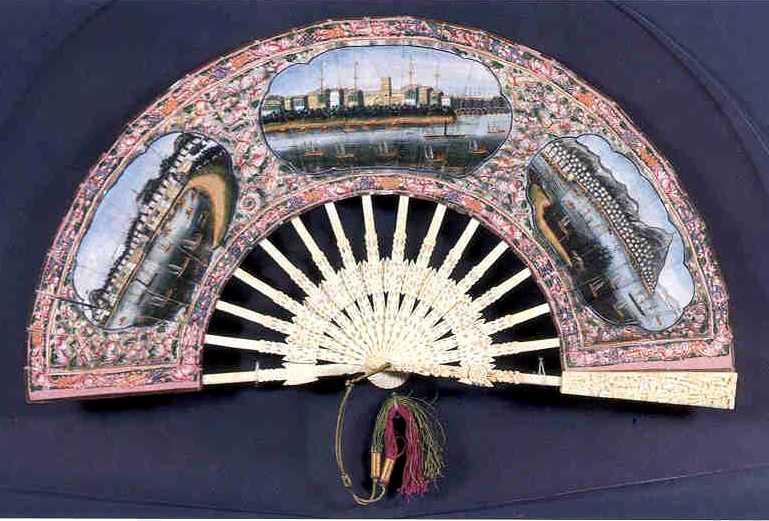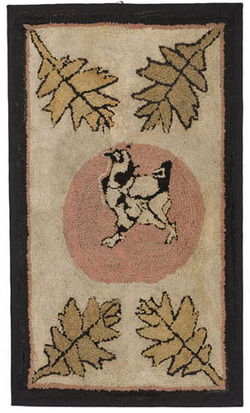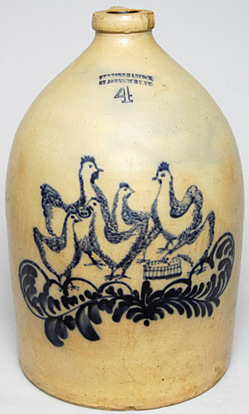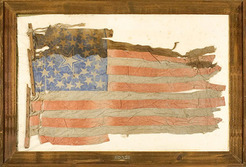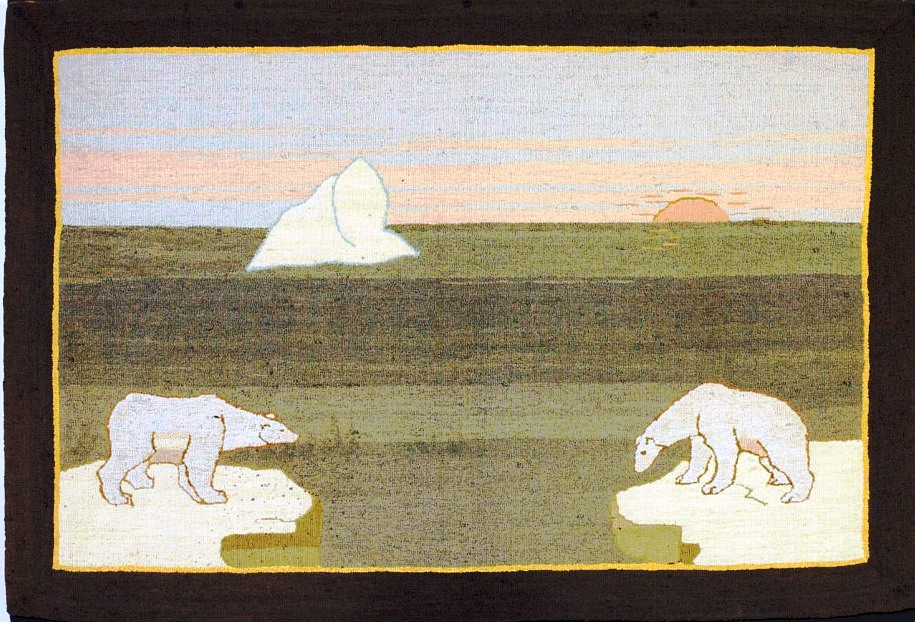
Grenfell rug with polar bears on ice floes
Something about cold weather makes me fish out needlework projects – just seems like the time of year one should be making socks, making hats, making something warm and being productive. It’s the season of all those needlework skills: embroidery, knitting, and hooked work. Cold weather and short days also probably go a long way toward explaining the existence of a particular kind of hooked rug, the Grenfell mat.
In 1892, Dr. Wilfred Grenfell, a medical missionary sent by the Royal National Mission to Deep Sea Fishermen, landed on the coast of Labrador, where he found a struggling population who lived on the edge of survival, eking out a living in a harsh landscape. A kindly man who understood that improving quality of life would improve physical health, Grenfell set about making improvements to the coastal communities he served – creating schools, clinics, and cooperatives. Grenfell was aware of the need to help the locals generate income, and by latching onto the region’s well-established history of making hooked rugs, one of his projects was the creation of a hooked rug cottage industry. Using his missionary connections to solicit materials, Grenfell worked with local women in Newfoundland and Labrador to create designs and to translate them to decorative hooked works on burlap mats with dyed strips of fabrics (in later years, often recycled women’s hosiery) that were then sold by the hundreds.
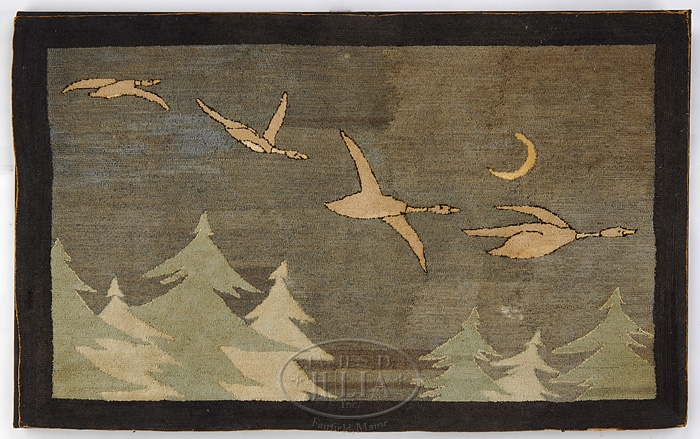
Grenfell hooked rug depicting flying geese
While there are numerous hooked rugs in the antiques marketplace, Grenfell rugs or mats are very distinctive. They are worked on burlap (many hooked rugs are), but they’re in fairly standard sizes, and while many hooked rugs are freestyle and/or unique, there are a limited number of Grenfell designs; many of the designs depict the Labrador region in their scenes – images of polar bears (like the one pictured above), geese in flight, sled dogs and ice floes are among the most common. Many of them are, conveniently enough, identified with cloth tags, although not all are – the Mission would occasionally run out of the preprinted tags. These beautiful mats initially sold for just $3.50-$8.00.
Updated 3/26/10. A note about identifying Grenfell rugs:
For the most part, Grenfell mats/rugs had labels, but some have lost theirs over time or have been mounted to board in a way that completely obscures the back and the label. In my experience, being certain is a matter of handling a fair number of them. Because they were almost kit-like in their production, the materials have a consistency across the board, for the most part, that allows someone who has seen a number of them to be confident, and again, because it was a cottage industry of sorts with people being trained to make them, the production techniques are often similar – how the knots and stitches are formed, etc. The design is a good way to know if you’re headed in the right direction though. Usually, the designs are of Arctic or northern scenes – polar bears, geese, trees in a snowy landscape, and again, because of the kit production, as you can see if you search for them in the database, there are numerous examples of the exact same design, just worked in different color palettes. As always, when someone asks me how they find out a little more after looking in the database, I recommend sending photographs to a regional auction house with a good reputation. They’ll not put anything formal in writing, but most are always willing to give an opinion and an auction estimate. If the first place someone tries isn’t willing, keep looking, because looking at objects and sharing information is something most auction houses recognize as the cost of doing business!
-Hollie Davis, Senior Editor, p4A.com
—
(For more on Grenfell and the Mission, read our reference note.)
Reference & Further Recommended Reading:
To search the Prices4Antiques antiques reference database for valuation information on hundreds of thousands of antiques and fine art visit our homepage www.prices4antiques.com
